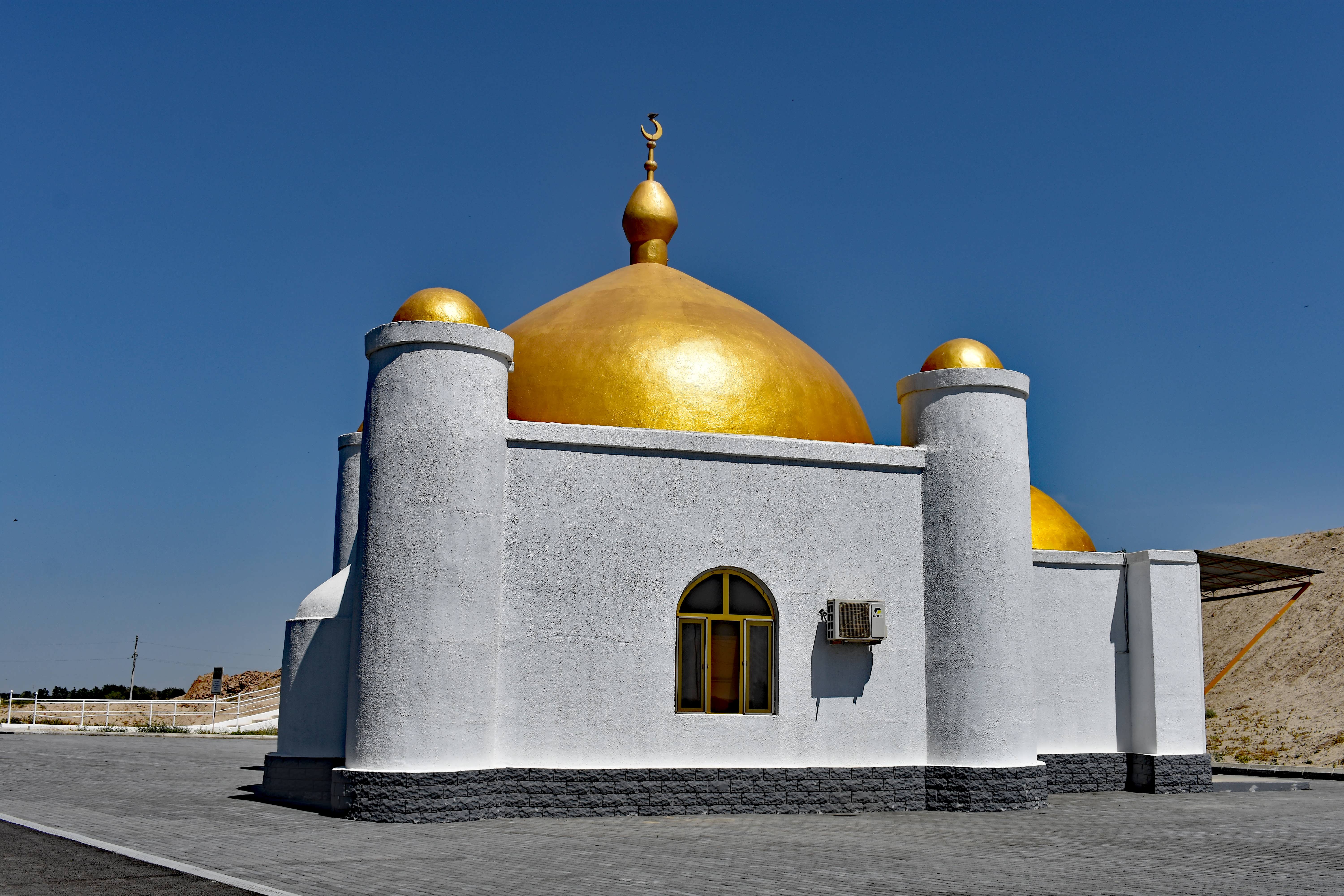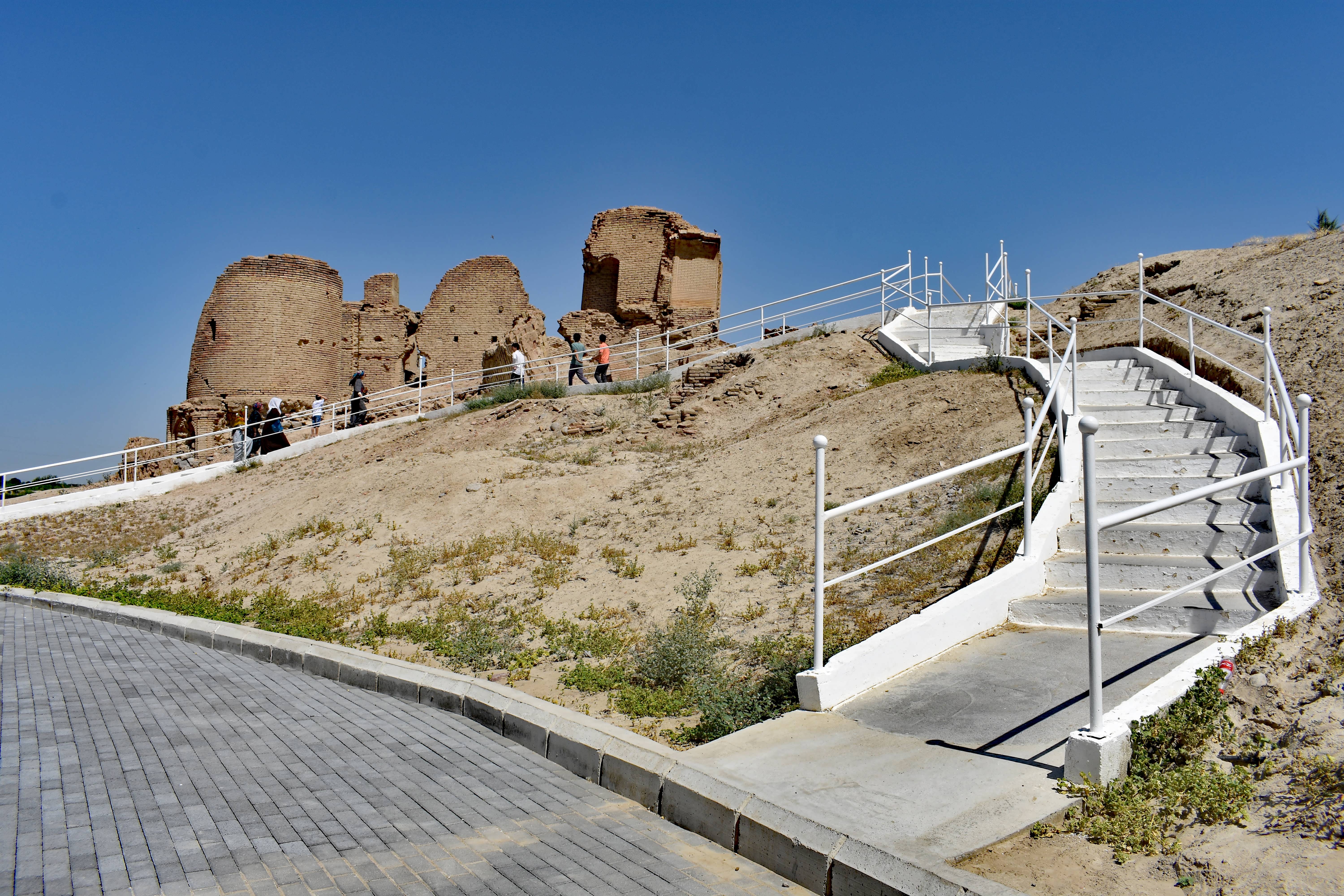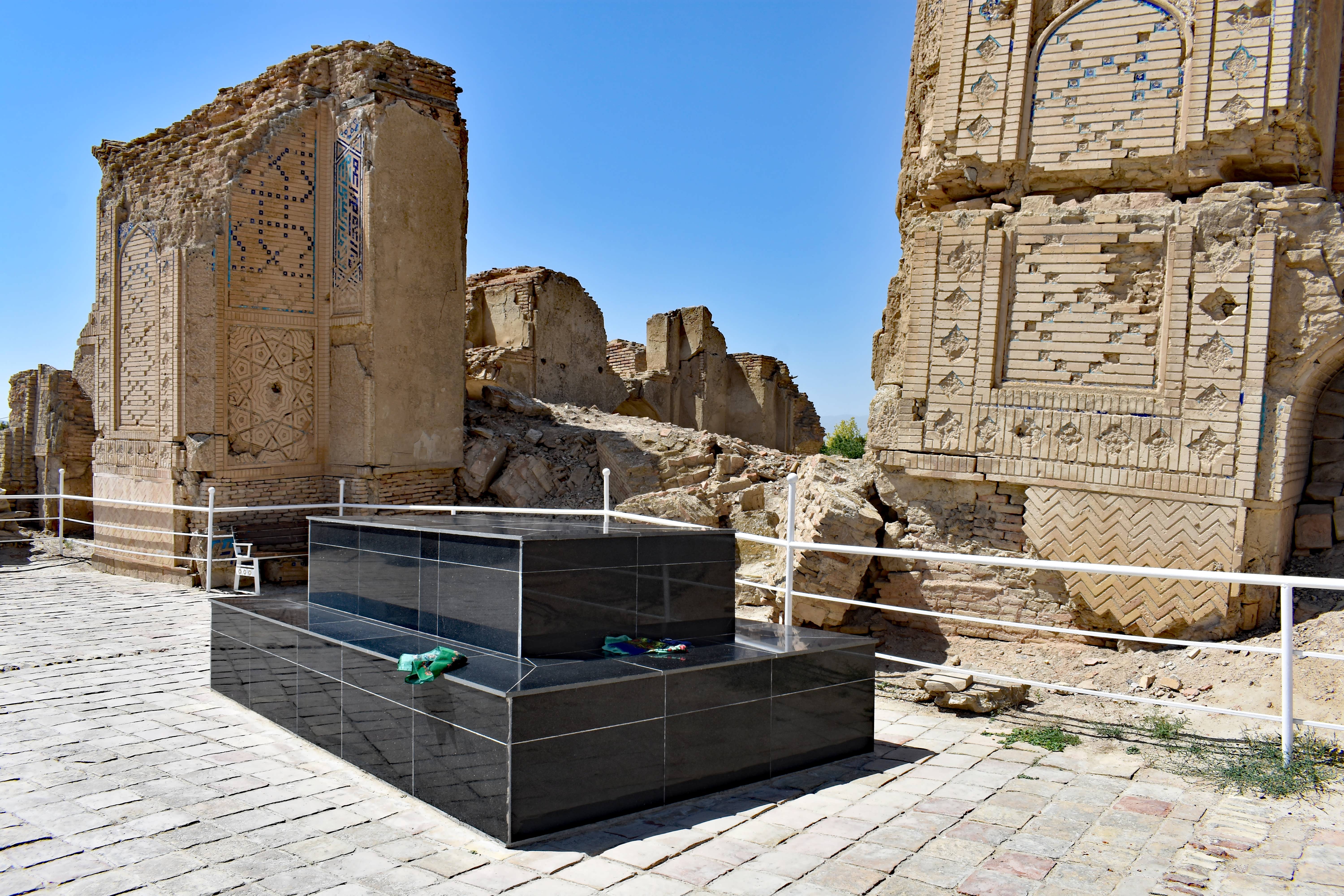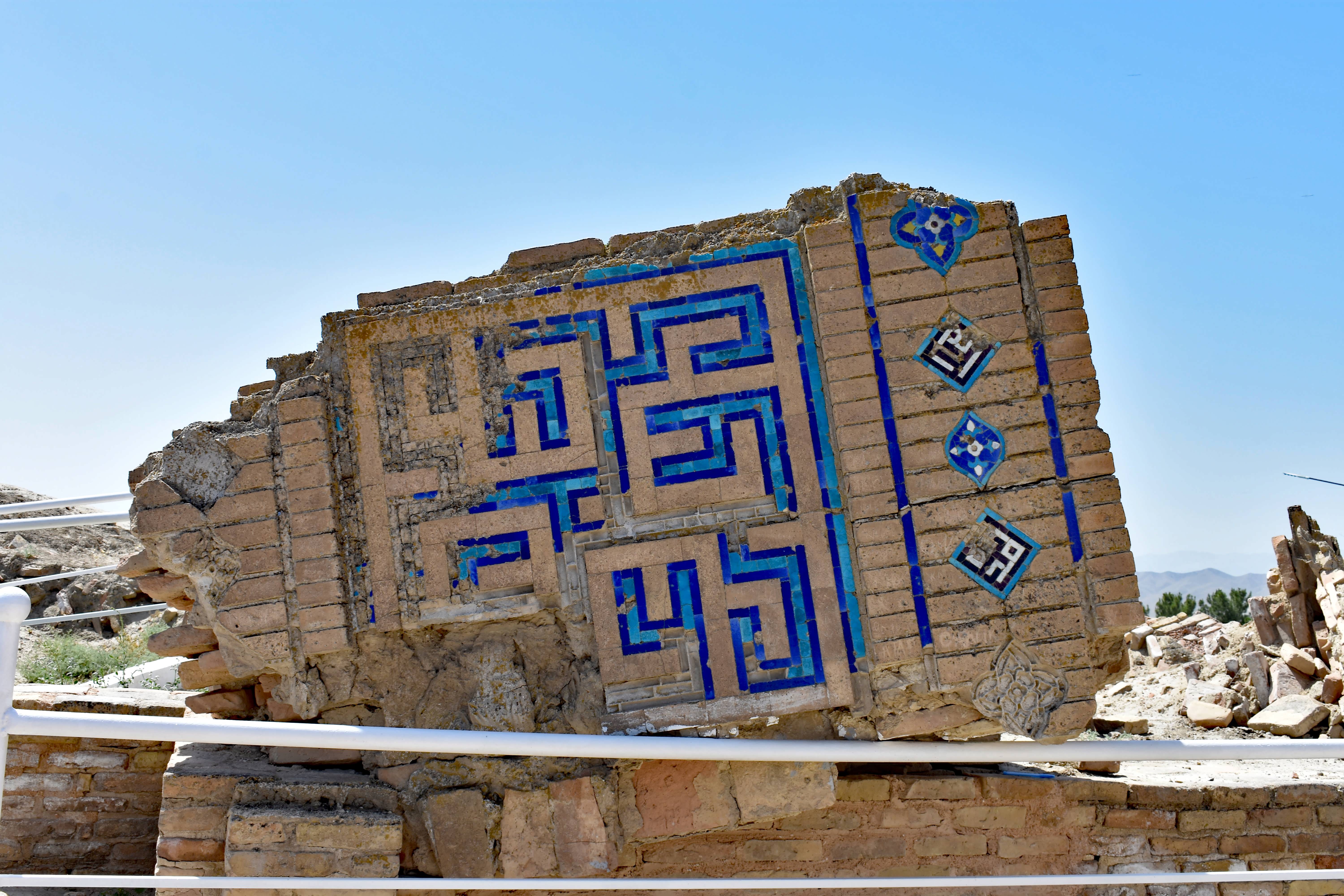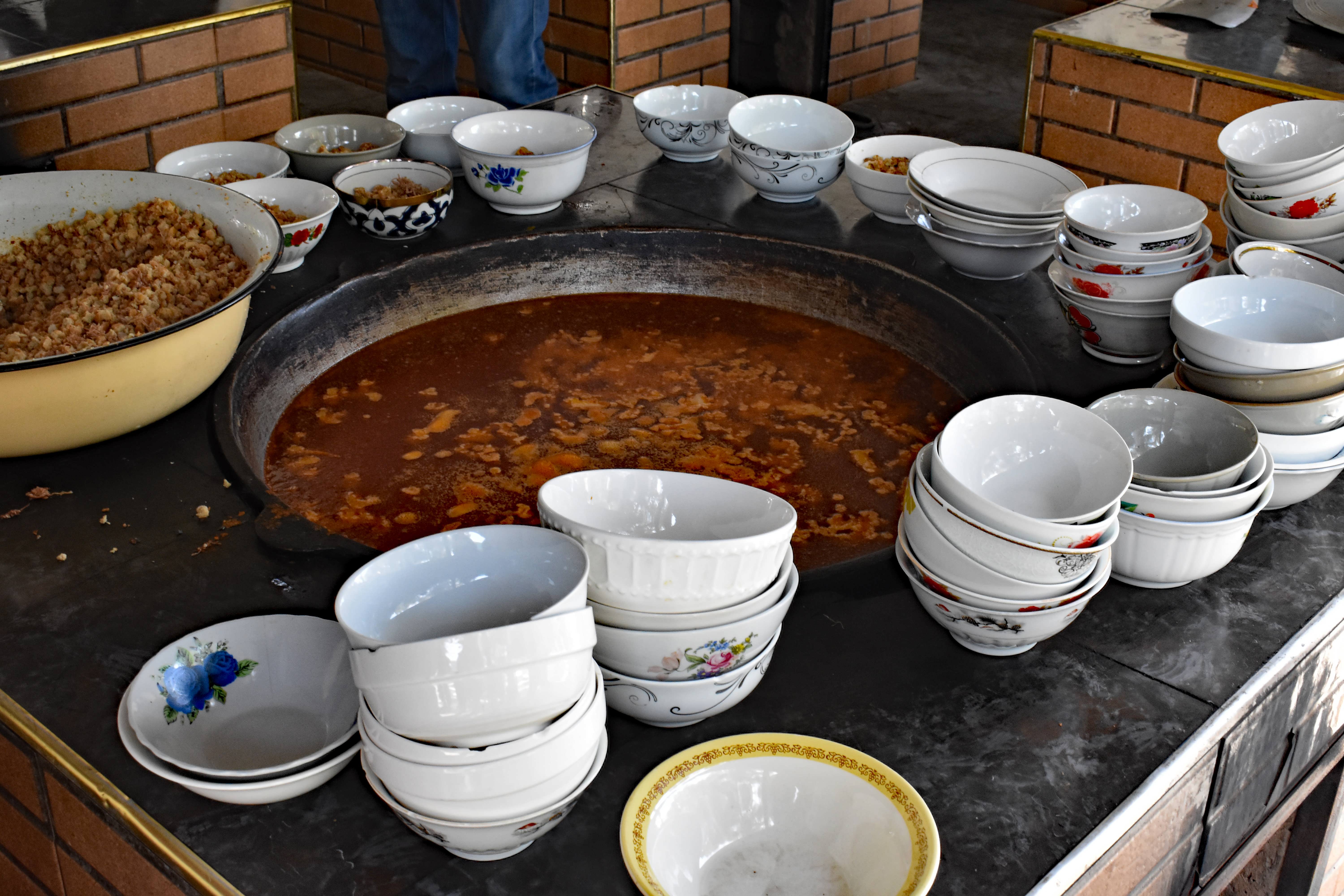Whilst staying in Turkmenistan’s capital Ashgabat, we visited Seyit Jemaleddin Mosque located 12km away in the village of Anau. The original mosque was built in the XV century but almost completely destroyed by the 1948 Ashgabat earthquake.
At the base of the hill, stood a new white-washed, golden-domed mosque, but we took a staircase leading up to the hill-top ruins where the turquoise coloured tiles were still visible.
This is one of the most important religious places in Turkmenistan with people visiting to pray, make sacrifice or simply wander in the grounds, and as we visited on a Sunday, it was particularly busy. Faithful pilgrims were circling the simple black marble tomb of a nameless person, hoping their prayers would be answered. Others had taken different approaches: ‘graffiti requests’ adorned the walls, objects like ribbons and hair clips were left, and when it rained, pilgrims took a piece of mud from the ground, applied it to the part of the body that was suffering, before putting on to the wall – if it stuck, they would be cured.
When prayers were answered, people gave thanks by preparing food in the sadaqah or charity kitchen. Here we could see dograma soup, containing meat, bread and onions, and Central Asia’s ubiquitous plov, or rice with lamb, being prepared in huge quantities before being served to the needy. Despite having had a hearty breakfast, and knowing we had a large lunch to come, we had no choice but to kindly accept the portions offered to us to try.
This was one of the busier places we visited and whilst many of the rituals are not Islamic, people obviously believe in them.
